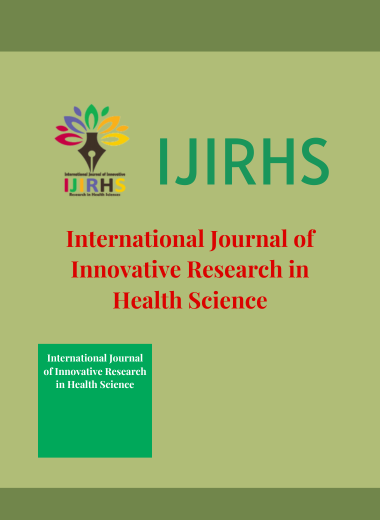- Mahizh Punitha, S. Krishanthini, S. Lilly Priya, A. Madhumitha, R. Malini, A. Muthuganga, R. Nandhini
- Volume 2, Issue 1
Address:
Mahizh Punitha1, S. Krishanthini2, S. Lilly Priya3, A. Madhumitha4, R. Malini5, Muthuganga6, R. Nandhini7
- Professor, faculty of nursing, Dr.M.G.R. Educational and Research Institute, Chennai, India.
- B.sc Nursing, faculty of nursing, Dr.M.G.R. Educational and Research Institute, Chennai, India.
- B.sc Nursing, faculty of nursing, Dr.M.G.R. Educational and Research Institute, Chennai, India.
- B.sc Nursing, faculty of nursing, Dr.M.G.R. Educational and Research Institute, Chennai, India.
- B.sc Nursing, faculty of nursing, Dr.M.G.R. Educational and Research Institute, Chennai, India.
- B.sc Nursing, faculty of nursing, Dr.M.G.R. Educational and Research Institute, Chennai, India.
- B.sc Nursing, faculty of nursing, Dr.M.G.R. Educational and Research Institute, Chennai, India.
ABSTRACT
Introduction: Reproductive health is crucial for overall well-being, and adolescence is a crucial period for adolescents to develop biologically and psychologically. Gynecological diseases, such as polycystic ovarian syndrome (PCOS), are common during adolescence, affecting 5-10% of females and 4-6% of adolescent girls worldwide.
Aim of the study: The aim of the study to assess the risk factors and to decrease the polycystic ovarian syndrome among fertile age group girls.
Methodology: This study employed a quantitative research approach with a descriptive research design to assess the risk factors for developing polycystic ovarian syndrome (PCOS) among adolescent girls. The study was conducted at Government Higher Secondary School, Gomathipuram, Thiruninravur, targeting 100 adolescent girls aged 14-17 years, selected using a non-probability purposive sampling technique. The inclusion criteria covered adolescent girls aged 14-17 years who were willing to participate, present during data collection, and able to read and write in English, while exclusion criteria involved those unwilling to participate or who had not attained menarche.
Results: The result of this present study is that 60% of adolescent girls were at high risk of developing PCOS, while 38% fell into the moderate-risk category, and only 2% were classified as low risk.
Conclusion: The study revealed that nearly 2% of the people possess adequate knowledge and 38% has moderate knowledge and 60% had Inadequate knowledge regarding PCOS among adolescent girls.
Keywords: Reproductive, Polycystic ovarian syndrome, adolescent girls.
- Mahizh Punitha, S. Krishanthini, S. Lilly Priya, A. Madhumitha, R. Malini, A. Muthuganga, R. Nandhini (2025). A descriptive study to assess the various levels of risk factors for developing polycystic ovarian syndrome among adolescent girls in selected school at Chennai. International Journal of Innovative Research in Health Science, 3(1), 1-8.



